
When I was a child in the 1950s and 1960s our family made annual trips to visit our ancestors! How you ask? Well, of course, we went to the cemeteries where they were buried.
Now, I know that visits to cemeteries are sometimes viewed with hesitancy in this day and age by a lot of people. Sometimes the visits are necessary to endure as when a close loved one dies and sometimes the visits are just avoided. But… did you ever think that a visit to a beautiful, quiet, serene cemetery could be of great interest and as an information-gathering trip?
Indulge me as I recant some of the stories of my visits to the cemeteries of my ancestors when I was a child. There were three cemeteries that my family visited annually, two on my maternal side and one on my paternal side.
We are a participant in the Amazon Services LLC Associates Program, an affiliate advertising program designed to provide a means for us to earn fees by linking to Amazon.com and affiliated sites. When you purchase through a link to an Amazon affiliate link placed on our website, we may receive a small commission at no additional cost to you.
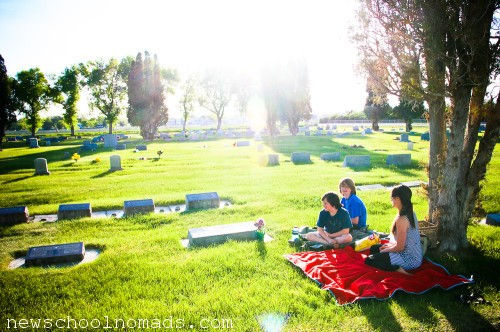
As was the custom up until the 1960s families often visited the cemeteries of their ancestors to plant flowers on the graves, usually around Memorial Day. Our family was no exception. My mother would prepare and pack a picnic lunch for us and off we would go to Williamsport. One of the times we visited I remember dropping a whole chocolate cake with chocolate icing in the driveway of our home before we began our trip (my brothers and dad were sad about that). I guess I wasn’t paying attention to what I was doing. Another time, my younger brother was fooling around with a pencil and accidentally jabbed it into my leg (I still have the graphite in my leg today!). Oh, the weird memories!
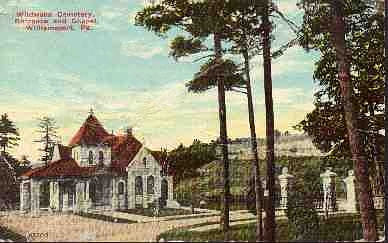
Wildwood Cemetery in Williamsport, Pennsylvania is an absolutely beautiful, picturesque, and historic cemetery located high on a hill in central Pennsylvania. This was the cemetery that was on my father's side of the family. Most of his ancestors were from the central Pennsylvania area.
When I was a child our parents would take my two brothers and me on the annual or sometimes semi-annual one-hour drive to visit the cemetery to adorn the graves of the ancestors on my father’s side of the family. The cemetery has been open to the public and members of all faiths since 1863 with over 57,000 souls in eternal rest with many graves of prominent and historical interest.

As we entered the cemetery my mother always recanted to my dad about how to find the family plot. There are over 20 miles of road in Wildwood Cemetery! We sometimes made wrong turns on dirt roads that were steep and dropped off abruptly on the side edge of the road, but we always found the family plot due to the names on some long-forgotten tombstones of people with surnames that were very different from ours on various landmark corner plots that were near ours. In contrast, the headstones of my ancestors are remarkably simple, with no adornment, only names, and dates.
As my parents went about digging small holes by the headstones for the flowers that we brought to plant, my brothers and I went exploring up one hillside and down another. Across the road from our family’s plot was a large area of military graves belonging to soldiers of the

Civil War. The headstones were arranged around a large, central statuary with an imposing figure of a Union soldier at the top. I was in awe! Now, keep in mind that in the 1950s the Civil War had been over for more than 90 years. I thought that was an amazing amount of time! Just think how long it has been today. I would make up stories about the men and their lives and enjoy reading their names and calculating their ages. It was so quiet and serene; a quite different scene from where they fought and died. My brothers thought I was crazy! I guess I became hooked on history, and later on genealogy from those trips.
Down the hill from the family plot was a row of graves that had a small headstone with a weather-worn lamb on the top. I remember it so vividly. It made me so sad when I calculated that the child was only three-years-old when she passed. Again, my brothers thought I was crazy. I remember coming back up the hill to where my parents were working crying about the long-passed child. My parents were understanding, my father had a great reverence for the long-departed. It was in that cemetery that I learned some things about my ancestors' lives that I never would have even thought to ask until much later in my life.
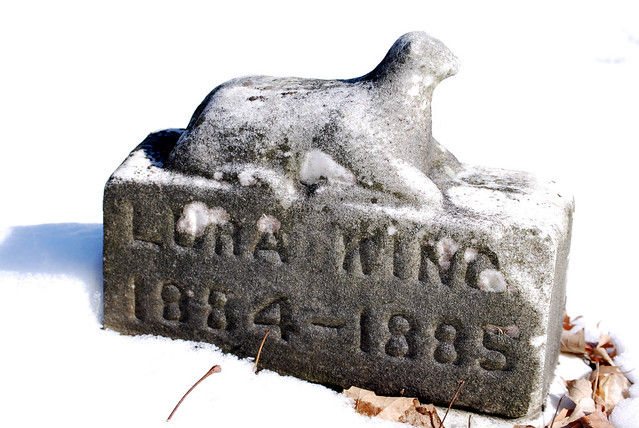
During one of those years and visits, I had a life-threatening illness, and I felt a strong connection to those ancestors. Thankfully and miraculously I have since recovered from that illness.
So, I became the family genealogist because of those family picnic trips to the cemeteries. Today I know much, much more about my paternal side of the family. I now know about the stories that were lost, where they lived, who they loved, how some of them immigrated to America to escape religious persecution, how one came to colonial America as an indentured servant, about their parents and grandparents, and farther back into their history in England, Scotland, Ireland and Germany.
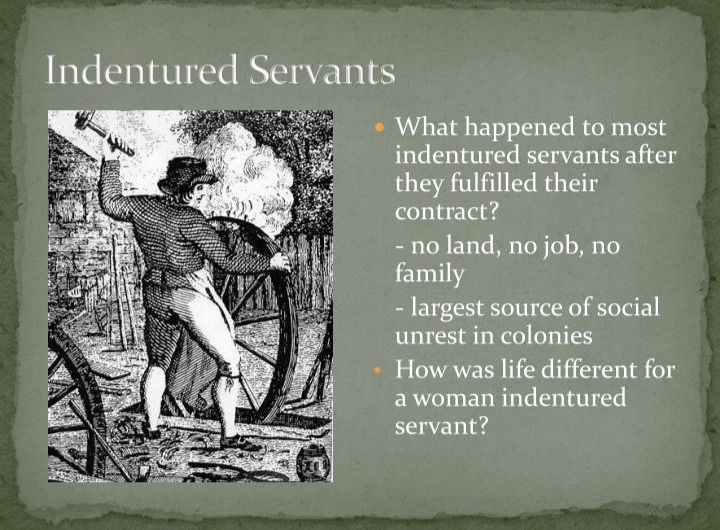
The visits to the cemeteries of my mother’s ancestors were different from those of my father’s, with no picnics in the cemetery, fewer interesting tombstones, and different in appearance. There were two prominent cemeteries on that side of my family. The cemeteries were harsher looking than the ones from my father’s side and the questions that I asked about those ancestors were answered more abruptly and in a shorter, more matter-of-fact way.
But the cemeteries all contained names, birth years, and death dates. That also piqued my interest in genealogy. I became determined to learn more about those ancestors. So, I did just that. I asked questions of various relatives and slowly formed my ideas about the families. I extracted stories and history about them that even my own mother did not know. Her family was rather close-mouthed about their ancestry and sometimes the stories they told were outright lies, although most of the family members did not know that. I am still working on why that was the case.

One cemetery, Mt. Greenwood Cemetery, was extremely near to my childhood home, but we still only went there semi-annually. It was established in 1906. Both cemeteries were in northeastern Pennsylvania. The ancestors buried there were also from England, but they came to America as hard-working miners and continued that profession in America. Through my research, I surmised that they were hard-working, no-nonsense people.
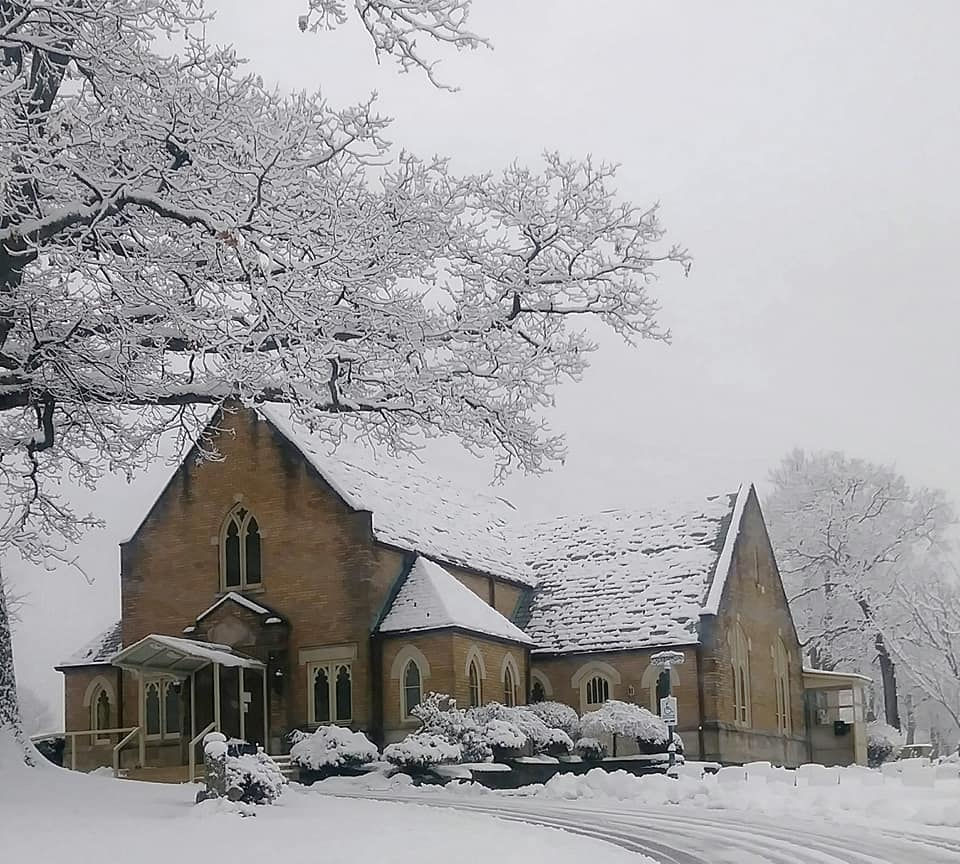
The other cemetery was Maple Hill in Wilkes-Barre, Pennsylvania. I had never even been there until my great-grandmother and my grandmother both died within three weeks of each other in 1965 when I was a teenager. To my surprise, my great-great grandparents were also buried there in the family plot. And in the plot, next to my great-grandmother’s, was the resting place of my great-grandfather whom I had never met (he died before I was born), nor did anyone in the family speak much about him. Later in my life, I wanted to learn more about him.
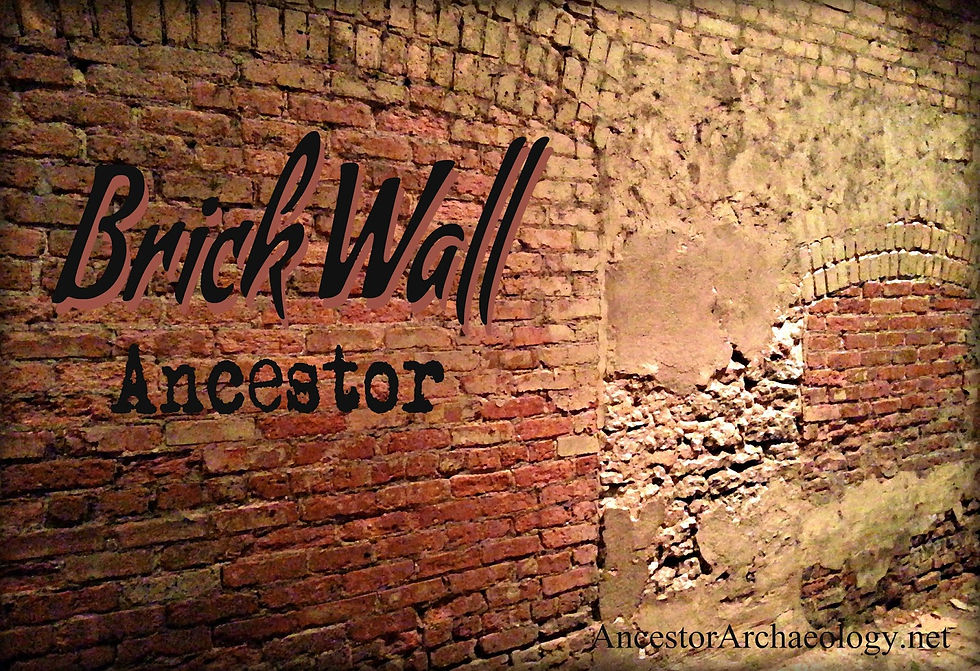
My first cousin has the record from the cemetery about the plot that she received when my uncle passed. In this record, it is stated that interred there is the body of a nine-year-old boy, who died in 1929, buried next to my great-grandfather with only his surname (that of my great-grandfather) and a short abbreviated given name registered in the cemetery office. My grandfather, his only son, had no brothers and only one adopted sister of which I was aware. My great-grandmother only ever birthed one child, my maternal grandfather. This mystery is one of my “brick walls.” But it also somewhat explains why no one talked much about great grandpa. I have learned some information about his life since then, but the brick wall persists.
It also seems that his family ancestors originally came from Boston, Massachusetts. My great-grandmother's family in America also originated in the colonies and one of our ancestors was hung on the Boston Common in 1676 after King Philip's War. I think I have found one of the "black sheep" of my family!

I need to add here that some of the research that I have done regarding one of my maternal great-grandmothers has led me to a possible Mayflower passenger ancestor. This is my new focus in proving a branch of my family is connected to the Mayflower.
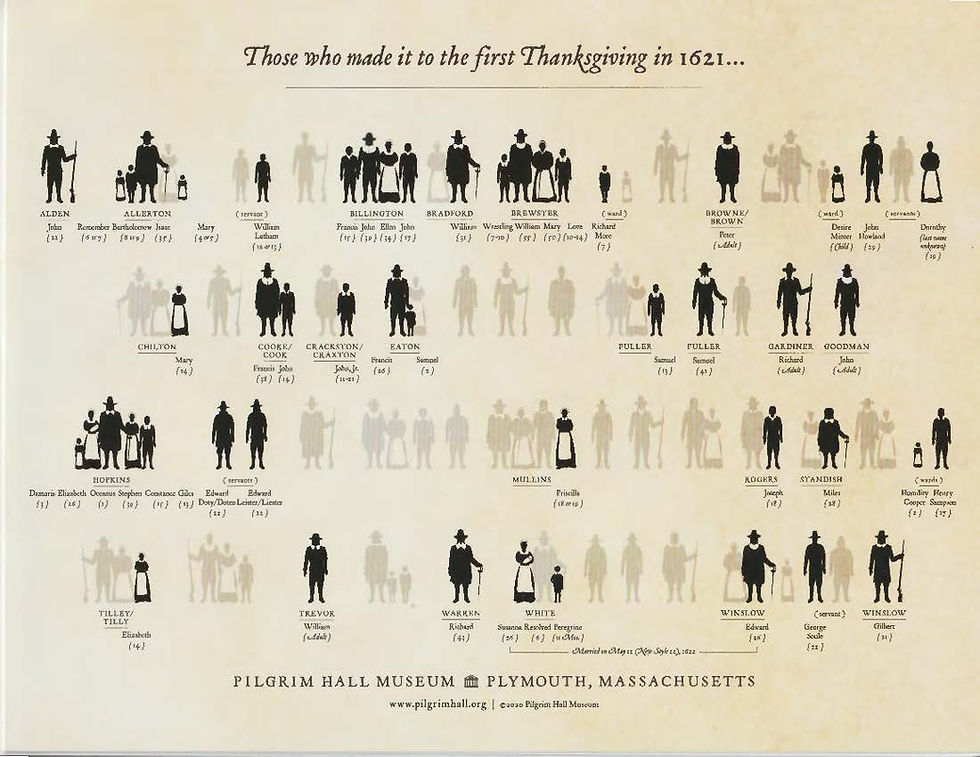
Since the cemetery visits from so many years ago I have researched much family history. I have found a good number of other interesting and informative cemeteries and graveyards with the names, birth dates, and death dates of my ancestors.
The takeaway from this blog post is that by visiting the cemeteries and graves of our ancestors one may uncover new, exciting and valuable information about our family trees and histories.
This is a great book if you like to visit cemeteries to research your family tree:
This post contains affiliate links. This means I may earn a commission should you choose to sign up for a program or make a purchase using my link. It’s okay – I love all of these companies anyway, and you will, too!

Comments